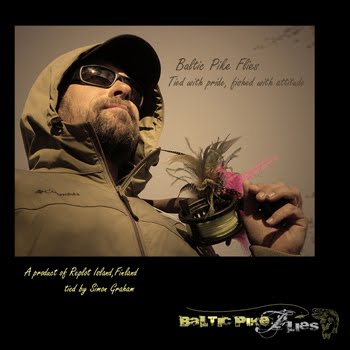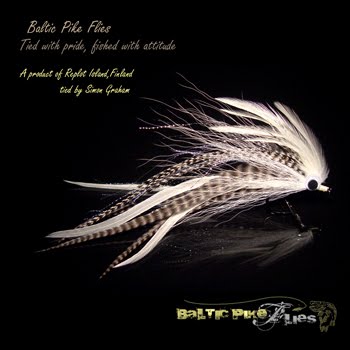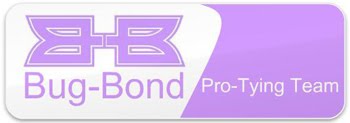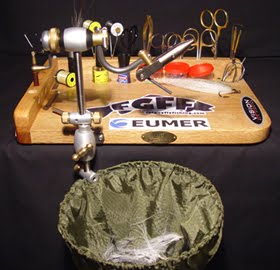
Getting away from Pike flies for a moment and on to the subject of Shrimp patterns. When I was fly-fishing for saltwater species in South Africa during the early nineties, new age fly tying materials were extremely hard to come by which was due to a number of factors. The first being, there were very few fly-fishing shops to be had….still are I might add, although shops like “Kingfisher’s” in Durban now stock a wide range of goodies which are supplied to them by one of the largest producers now of synthetic materials “Fishient group” found in Scottburgh on the South Coast, and secondly the internet was pretty much none existent even up until a few years ago. So as a fly-fisherman one really had to find and conjure up what ever materials I could lay my grubby little mitts on to tie curtain patterns. Hence why I’m probably such a tight arse with regards to not only saving off cuts, but also with the use of alternative materials and equipment within the sport.
Anyway Shrimp patterns were never far from the business end of my tippet and can account for 60% of the fish I caught. I literally tied hundreds of them in pretty much the same pattern. Now over the last 3 months I’ve spent a considerable amount of time looking at shrimp patterns and tutorials and have been very surprised by one finding and that is that none of them use Guinea fowl feathers for the legs which I always used on my shrimp patterns.
For me there’s no better feather for reproducing shrimp legs than a guinea fowl feather. One only has to split each filament to see the striations they leave, and once palmered on around the hook shaft the end product speaks for itself. What’s more, Guinea fowl feathers are extremely oily, which offer a much stiffer profile than say Chinese Cock neck hackles which most tiers prefer to use.
This images is of the shrimp pattern I used all those years back with the exception of using Bug-bond instead of 10 min epoxy, and the bucktail had to be dyed baby pink by myself.
This is what I would call the new age version where I’ve used tiny dumbbell eyes at the rear of the fly to give it a bit of weight and added a few strands of pink flashaboy in to the mix as well as pincers at the front and a tail, all bug-bonded together at the rear. These additions I might add aren’t necessary as the original bagged me literally hundreds of Stump-nose, Bream, Snapper, Grunter, Flatheads as well as anabundance of estuary bound species.
For those that want a tried and tested shrimp pattern for a multitude of fresh and saltwater species here’s a step by step tutorial for you to use. Move mouse over the tutorial and click view in full full screen mode



































0 comments:
Post a Comment